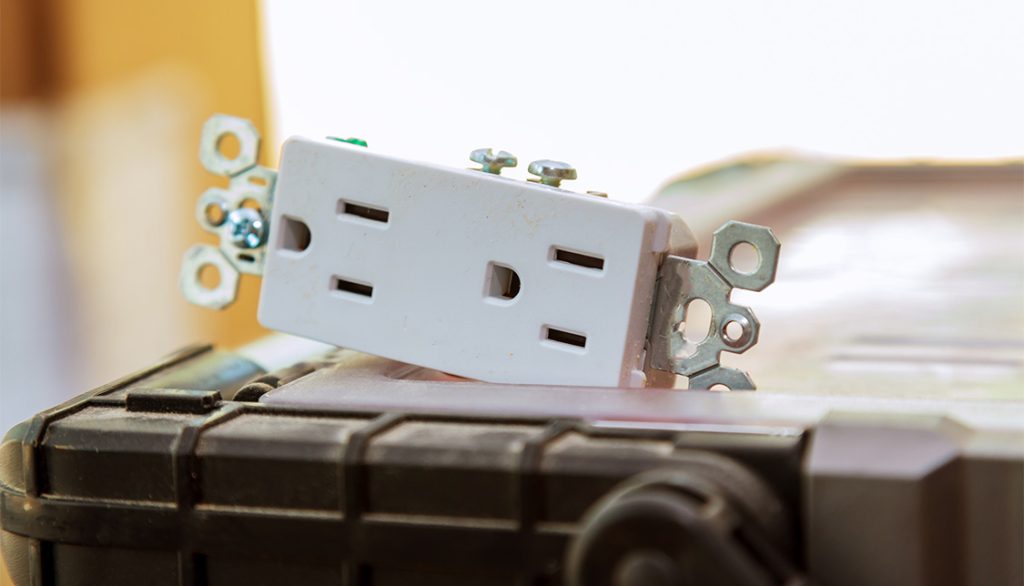How to Safely Add More Outlets in an Older Home

A Practical, Safety-Focused Guide for Families Tired of Using Extension Cords and Power Strips
If you live in an older home, chances are you’ve found yourself constantly juggling power strips, unplugging one device to plug in another, or tripping over extension cords. This isn’t just frustrating—it can also be a fire hazard. Many older homes were built at a time when the electrical demand was far lower than it is today. With the growing number of electronics and appliances in modern households, it’s no wonder that families are outgrowing their original outlet count.
In this guide, we’ll walk you through how to safely and smartly add more outlets to your home, when to call a residential electrician, and why it’s important to approach this task with caution.
Why Older Homes Fall Short on Outlets
Most homes built before the 1980s weren’t designed to accommodate the number of devices we now rely on daily—think TVs in every room, phone chargers, gaming systems, computers, smart speakers, and kitchen gadgets. While you can temporarily work around this shortage with extension cords or multi-outlet adapters, those solutions are not ideal long-term.
Here’s why:
- Extension cords are not meant for permanent use and can overheat.
- Daisy-chained power strips increase fire risk.
- Overloaded circuits can cause frequent breaker trips or, worse, electrical fires.
Simply put, if you consistently need more power than your current setup allows, it’s time to consider adding outlets.
Step 1: Evaluate Your Current Electrical System
Before adding outlets, assess whether your home’s electrical system can handle the additional demand. Many older homes have outdated service panels or limited circuits. Adding outlets without checking this first could overload the system.
You can:
- Check your breaker panel: Are circuits already at capacity?
- Look for signs of stress: Frequent breaker trips or flickering lights could mean your system is already strained.
- Consider a professional evaluation: A residential electrician can assess your home’s capacity and recommend upgrades if needed.
In some cases, you may need a service panel upgrade before you can safely install additional outlets.
Step 2: Plan Your Outlet Placement Strategically
Think through where outlets are needed the most. Focus on high-use areas like:
- Kitchens (especially near counters)
- Living rooms (TVs, game consoles, lamps)
- Home offices (computers, monitors, printers)
- Bedrooms (chargers, lamps, alarm clocks)
Also consider adding outlets:
- Higher on walls for wall-mounted TVs
- In baseboards or under cabinets for subtle visibility
- With built-in USB ports for modern device charging
Planning smart outlet placement can reduce your reliance on extension cords and streamline how your household accesses power.
Step 3: Understand Code Requirements and Permits
In Canada, all electrical work must meet the Canadian Electrical Code (CEC). This includes guidelines on outlet spacing, grounding, and circuit protection.
Key residential electrical code requirements include:
- GFCI protection in bathrooms, kitchens, and outdoor areas
- Tamper-resistant outlets for homes with children
- A permit and inspection for most new wiring or outlet additions
This is one reason why it’s not recommended to attempt DIY outlet installations unless you are fully trained and licensed. Improper installation can lead to fines, failed inspections, or dangerous hazards.
Step 4: Hire a Licensed Residential Electrician
Hiring a licensed residential electrician ensures the work is done safely, up to code, and with long-term performance in mind. They will:
- Review your home’s wiring
- Determine whether new circuits are needed
- Cut and mount outlet boxes properly
- Run new wiring or extend existing lines safely
- Secure permits and arrange inspections if necessary
An electrical contractor will also guarantee the work, giving you peace of mind that your home is both safe and future-proofed.
Bonus Tip: Consider Upgraded Outlets
When adding outlets, it might be a good time to explore modern options that enhance convenience and safety:
- USB combo outlets: Charge phones and tablets directly.
- Smart outlets: Control lights or devices with your phone or voice assistant.
- 20-amp circuits: For areas where heavy-duty devices are used, like garages or kitchens.
These upgrades are often easy to install alongside standard outlets and can make a big difference in everyday usability.
Warning Signs You Shouldn’t Ignore
Before wrapping up, here are a few red flags that suggest your older home may need more than just a few new outlets:
- Warm or discolored outlets
- Sparking or buzzing when plugging in devices
- Frequent use of extension cords or power bars
- Outlets that only accept two-prong plugs (ungrounded)
These are indications that your home’s electrical system may be outdated or unsafe. If you notice any of these, contact a residential electrical professional immediately.
Final Thoughts
Adding more electrical outlets to your older home is one of the best ways to improve convenience and safety. While it may seem like a minor upgrade, doing it right can prevent fire hazards, reduce clutter, and make your home better suited for modern living. Always work with a licensed electrician contractor to ensure everything is up to code and safely installed.
Investing in your home’s electrical infrastructure not only solves day-to-day frustrations—it also adds long-term value and peace of mind.
